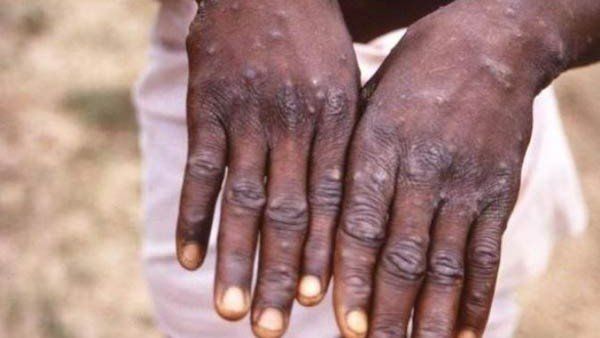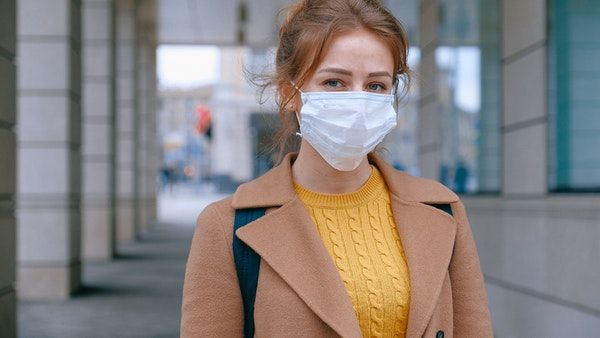Just In
- 39 min ago

- 8 hrs ago

- 8 hrs ago

- 12 hrs ago

Don't Miss
- Sports
 DC vs SRH Dream11 Prediction IPL 2024 Match 35: Squads, Fantasy Tips & Best Picks
DC vs SRH Dream11 Prediction IPL 2024 Match 35: Squads, Fantasy Tips & Best Picks - Finance
 1:10 Split, Rs 299/Sh Dividend: Tata's Steel Stock Up 11% In 30-Days, Better Than Nifty; PL Says Accumulate
1:10 Split, Rs 299/Sh Dividend: Tata's Steel Stock Up 11% In 30-Days, Better Than Nifty; PL Says Accumulate - Movies
 Bigg Boss Malayalam 6 Elimination Update: Jaanmoni Gets Evicted From Mohanlal’s Show? Here’s What We Know
Bigg Boss Malayalam 6 Elimination Update: Jaanmoni Gets Evicted From Mohanlal’s Show? Here’s What We Know - News
 Police To Enhance Security At Courthouse For Trump's Trial After Disturbing Incident
Police To Enhance Security At Courthouse For Trump's Trial After Disturbing Incident - Education
 Exam Pressure Does Not Exist; Studying Punctually is Crucial; Says Aditi, the PSEB 2024 Topper
Exam Pressure Does Not Exist; Studying Punctually is Crucial; Says Aditi, the PSEB 2024 Topper - Automobiles
 Suzuki Swift Hatchback Scores 4 Star Safety Rating At JNCAP – ADAS, New Engine & More
Suzuki Swift Hatchback Scores 4 Star Safety Rating At JNCAP – ADAS, New Engine & More - Technology
 Dell Introduces AI-Powered Laptops and Mobile Workstations for Enterprises in India
Dell Introduces AI-Powered Laptops and Mobile Workstations for Enterprises in India - Travel
 Journey From Delhi To Ooty: Top Transport Options And Attractions
Journey From Delhi To Ooty: Top Transport Options And Attractions
Monkeypox Vs Coronavirus: How The Two Infections Differ From Each Other
Monkeypox is a newly emerged viral infection that is known to cause a widespread rash on the body and face. The emergence of a new infection could be alarming during the coronavirus pandemic. Experts from around the world have raised concerns about this new viral disease.

According to the WHO, cases of monkeypox virus spread have been reported since May 13 from 12 Member States that do not come under the endemic region of the infection. These Member states include Australia, Canada, Belgium, Germany, France, Italy, US, UK, Spain, Sweden, Netherlands and Portugal, [1]
According to recent news reports, there are around 219 laboratory-confirmed monkeypox cases worldwide till 25 May. [2]
WHO experts said in a live online Q&A that they expect monkeypox cases to rise around the world, but there is no evidence that it will spread like the coronavirus.
So, how do the two infectious diseases differ from each other? Take a look.


What Is Monkeypox?
Monkeypox is a zoonotic disease (transmitted from animals to humans) that has become the most common orthopoxvirus infection (genus of viruses that cause smallpox) in humans, with notably lower mortality rates. [3]
The virus is present in endemic areas like Western and Central Africa through circulation among a variety of mammals, with occasional events of transmission to humans. In humans, the virus is transmitted through animal bites or direct contact with an infected animal's blood, bodily fluids, skin lesions and respiratory droplets. Some of these animals could be squirrels, mice, rats, monkeys and prairie dogs.
What Is Coronavirus?
Coronavirus disease 2019, also known as COVID-19, is a highly contagious infectious disease caused by the severe acute respiratory syndrome coronavirus 2 (SARS-CoV-2). The infection started a pandemic in the year 2019, which is ongoing to date.
COVID-19 has resulted in around 62.8 lakhs deaths worldwide as of 26 May, 2022, making it the most significant global health crisis since the 1918 influenza pandemic. Though COVID-19 has been effectively managed across the globe by vaccine development, medications and devices, its cases continue to rise with the arrival of more concerning COVID-19 variants like omicron and delta. [4]

Monkeypox Vs Coronavirus
1. According to WHO officials, human-to-human transmission of the monkeypox virus is extremely rare. If the transmission has occurred, it could probably be through close physical contact like skin-to-skin contact. This is the primary way in which monkeypox differs from COVID-19.
2. According to a study published in the journal National Library of Medicine, the coronavirus mainly spreads by respiratory droplets such as coughs or sneezes, up to a distance of six feet, and the virus also remains suspended in the air for up to three hours. [5] Later, many research papers revealed that the coronavirus can spread through much smaller particles called aerosols that can travel more than six feet.
3. Though monkeypox is also spread by respiratory droplets and fomites, it is not transmitted as fast as COVID-19 from one individual to another.
4. Coronavirus is a tiny, single-stranded RNA virus, giving it the ability to get transmitted long distances. The monkeypox virus, on the other hand, is a double-stranded DNA, meaning it is larger and heavier and cannot travel as far compared to COVID-19.
5. The fatality rate of monkeypox is below one per cent in the West African population and 11 per cent in the Central African population. On the other hand, the fatality rate of COVID-19 is five per cent for high-income countries and 2.8 per cent for low-income countries. [6]
6. The first case of the monkeypox virus was detected in the Democratic Republic of Congo in 1970. Since then, the virus has caused several small outbreaks, the majority of which has been limited to a few hundred cases in 11 African countries.
7. The highly infectious COVID-19 was discovered in Wuhan, China in December 2019 and has since spread to 212 countries and territories worldwide, infecting more than a billion people.
8. Similar to COVID-19, the monkeypox virus can also be transmitted from an infected mother to a child via the placenta or close contact after the delivery of the child. However, the infection rate in newborns is below two per cent, as per a study published in the journal The BMJ . [7] Studies on the infection rate of monkeypox from mother to child are limited. In severe cases, monkeypox can cause complications like stillbirth, preterm delivery or spontaneous abortion, however, some women with mild disease have also given birth to a full-term healthy child. [8]
9. According to current information by the WHO, monkeypox cases have been identified primarily, but not exclusively, among men who have sex with men undergoing treatment in primary care and sexual health clinics.

How Do The Symptoms Of Monkeypox Vary From COVID-19?
The key symptom of monkeypox is a painful rash that may start one to three days after developing a fever. It begins with flat red marks that gradually become raised and filled with pus over the next 5-7 days. The rash typically begins on the face and spread to other body parts like hands, feet and genitals.
Most of the symptoms of monkeypox are similar to those of smallpox, another infection spread by the same family of viruses. The other symptoms include fever, muscle pain, headache, swollen lymph nodes, chills and fever. The symptoms may start anywhere from 7-14 days, up to 21 days. The pus-filled rashes then crust over within two to four weeks, thus reducing the infection in the person's body.
COVID-19 can spread both asymptomatically and pre-symptomatically, unlike monkeypox, which does not have any pre-symptomatic mode of transmission.
The key symptoms of COVID-19 are fever, cough, chill, runny nose, loss of smell and taste and sore throat. COVID-19 is also known to cause rash, but it is not as prevalent in patients as respiratory symptoms. [9] Rash linked to COVID-19 mainly appears as a complication, if the condition is not treated earlier.
To Conclude
Monkeypox is not as contagious and life-threatening as COVID-19. Also, coronavirus disease has largely been managed worldwide with the sudden invention of vaccines. As the monkeypox infection is similar to smallpox, its vaccine can help prevent monkeypox too, as per the CDC.
-
 kidsTwin Viral Concerns Of COVID-19 And Monkeypox In Kids: What Parents Should Know
kidsTwin Viral Concerns Of COVID-19 And Monkeypox In Kids: What Parents Should Know -
 wellnessCommon Household Items Can Carry Monkeypox, CDC: What You Should Know
wellnessCommon Household Items Can Carry Monkeypox, CDC: What You Should Know -
 wellnessPets Should Be Isolated From Monkeypox Patients: WHO
wellnessPets Should Be Isolated From Monkeypox Patients: WHO -
 wellnessCan Washing Clothes Eliminate Monkeypox? Steps To Get Rid Of The Monkeypox Virus Through Laundry
wellnessCan Washing Clothes Eliminate Monkeypox? Steps To Get Rid Of The Monkeypox Virus Through Laundry -
 disorders cureAsymptomatic Monkeypox: Its Health Complications, Vaccine And Dos & Don'ts
disorders cureAsymptomatic Monkeypox: Its Health Complications, Vaccine And Dos & Don'ts -
 disorders cureMonkeypox vs Chickenpox: Know The Difference; If You Had Chickenpox, Are You Safe?
disorders cureMonkeypox vs Chickenpox: Know The Difference; If You Had Chickenpox, Are You Safe? -
 wellnessIndia Reports Second Confirmed Case Of Monkeypox From Kerala's Kannur: Official
wellnessIndia Reports Second Confirmed Case Of Monkeypox From Kerala's Kannur: Official -
 wellnessMonkeypox: Kerala Steps Up Vigil, Issues Special Alerts To Five Districts
wellnessMonkeypox: Kerala Steps Up Vigil, Issues Special Alerts To Five Districts -
 wellnessCovid-19 Vaccines Don't Cause Monkeypox, Shingles
wellnessCovid-19 Vaccines Don't Cause Monkeypox, Shingles -
 wellnessGovt Releases Monkeypox Guidelines On Detecting And Treating The Disease
wellnessGovt Releases Monkeypox Guidelines On Detecting And Treating The Disease -
 wellnessMonkeypox: We Have Vaccines And Drugs To Treat It
wellnessMonkeypox: We Have Vaccines And Drugs To Treat It -
 wellnessCentre Advises Isolation Of Suspected Monkeypox Cases At Designated Health Facilities
wellnessCentre Advises Isolation Of Suspected Monkeypox Cases At Designated Health Facilities


 Click it and Unblock the Notifications
Click it and Unblock the Notifications



